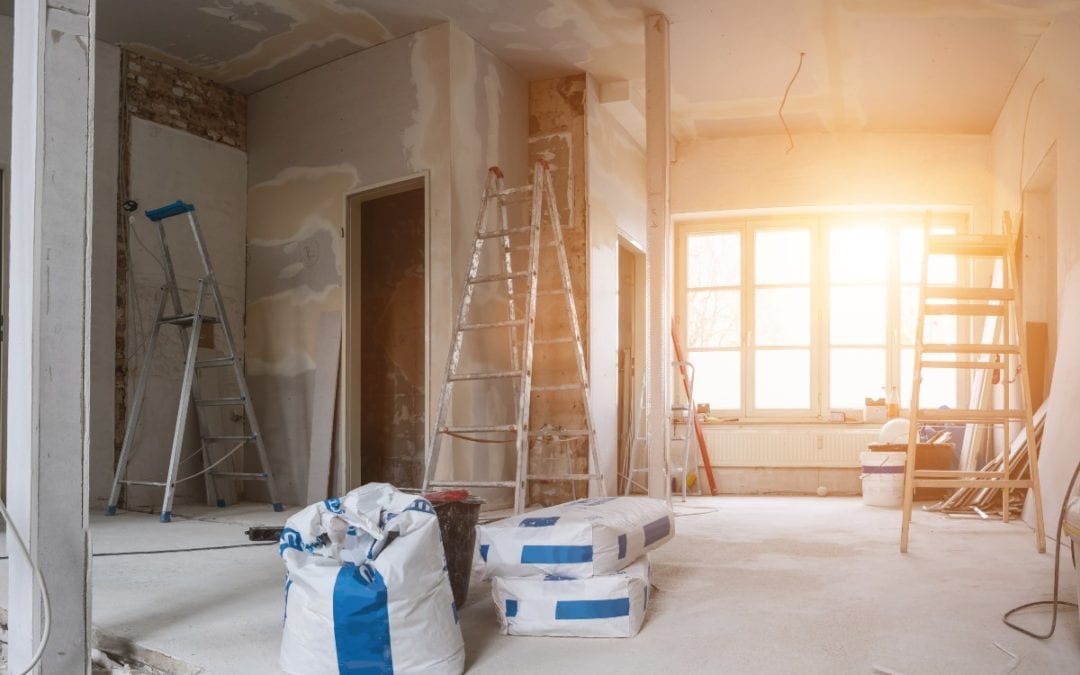
Eight Home Renovation Mistakes to Avoid
Embarking on a home renovation project can be an exciting journey – with endless opportunities to reimagine your living space or reconfigure the layout of your existing structure.
Whether you have bought a run-down building as renovation project, or want to refresh your existing building, the first step is to have detailed plans of what you’d like to achieve, and what the finished result will look like. Property renovation is one of those things where playing it by ear never works. You must have a clearly phased project to ensure you don’t skip steps or forget something that means moving back to carry out retrospective repairs, or incur additional costs.
It’s also wise to consider the interior design, the period features of your home, and how you will use spaces and rooms practically rather than focusing only on the aesthetics – because your property needs to work with you!
We’ve listed our eight top home renovation mistakes to help you form a detailed plan and avoid typical errors that can be extremely costly, before you begin working.
1. Buying Furniture and Furnishings Too Soon
Once you get stuck into renovation work, all those soft furnishings, elegant furniture, and wall coverings you see jump out as perfect for the dream home you’re creating.
However, buying décor too early is often problematic because while the project is ongoing, it’s difficult to take accurate measurements or find clarity about how and where furnishings or appliances need to go.
Think about:
- Buying beautiful antique pieces or contemporary furniture – only to find it doesn’t fit in the allotted space or would need to be taken apart to get through the door.
- Purchasing curtains, blinds or shutters that look great on paper but don’t match the glazing or the windows.
- Picking appliances or electronics without realising that there are no plug sockets close by.
- Investing in carpets or rugs that look beautiful but jar with the style or theme once the work is complete.
Our advice is never to guess at measurements or buy anything on a whim unless you are 100% certain it will be right for your home! Even smaller accessories such as light fittings, door handles or taps can be a wasted expense if they don’t fit into the sink you have chosen or are too large or small for your renovated doors.
Provided you have technical drawings or plans with the correct dimensions, you can schedule purchases of bigger ticket items strategically, taking advantage of seasonal sale periods to keep your home renovation budget under control.
2. Forgetting to Check the Natural Light
We talk a lot about natural light in a home renovation context, because the aspect of your home, the size of your windows and the position of each room dictates how the space feels and works. If you’ve ever wall-mounted a TV that is unwatchable at midday, you’ll understand the importance!
Sunlight also changes throughout the day and the seasons, so it’s worth spending time in each area at different times to gauge the light’s quality, strength and softness to help plan your room layout. This process ensures you’ll choose the right colour schemes and décor to maximise natural light without making darker or smaller rooms feel claustrophobic or gloomy.
Larger-scale glazing such as patio doors, picture windows or bi-fold doors can all benefit rooms that don’t have ample sunlight and make a space more comfortable and attractive.
3. Not Checking for Planning Permission Rules
Many aspects of home renovation do not require formal planning permission, but if you need building regulations approval and fail to apply, you could find yourself in hot water.
Adding an extension, sunroom or loft conversion to your home renovation project is a fantastic way to create more space and the saleable value of your property – but the larger the scale of the work, the more likely planning application and permission rules will apply.
In most cases, you can apply retrospectively. Still, if the local planning department rejects your plans, it could be a case of restructuring the extension or even removing the work altogether.
Homeowners with listed properties or those in a conservation area should be particularly cautious and verify whether planning applications apply before undertaking any home renovation work.
4. Taking on Too Much, Too Soon
Renovating an old property is more involved than a simple redecorating project, and those plans we have mentioned are crucial to keeping track of progress and seeing how much you have spent.
It is very common to want to jump into a home renovation project with both feet first, but this is invariably a mistake:
- Trying to renovate multiple rooms simultaneously causes disruption and makes it impossible to focus fully on any one task or decision.
- Monitoring a renovation budget is tricky, and if you spread yourself too thin, it is very easy to lose track and overspend on building materials and other costs.
- Quality is crucial, so working on one space at a time gives you more capacity to concentrate on achieving the best possible finish before you move forward.
We would suggest you work first on the rooms you’ll need to live comfortably – think bathrooms, kitchens and bedrooms.Once those areas are complete, you can get going with other spaces, such as hallways and living rooms.
5. Picking a Contractor Without Due Diligence
As an established renovation expert, our teams are always happy to provide quotes or pricing estimates and fully expect our clients to compare those rates, ask questions, or request advice and guidance throughout the planning process.
Picking a contractor without researching their skills, knowledge and previous projects can be a serious downfall if the building work fails to meet your expectations or you have to hire countless additional professionals for second fix jobs or to deal with structural issues.
House renovation is a big project, and you should take as much time as you need to explore budgets, construction methods, materials, layouts, techniques and finishes.
We suggest looking at previous work to verify that your contractor has an excellent track record and can back this up with customer testimonials!
6. Renovating Your Home Based on the Lowest Costs
Of course, costs are a necessary consideration, and however small or large your renovation project is, it must be affordable and well-planned. However, some perceived efficiencies will cost significantly more in the long run, and cutting corners is rarely advisable.
In some cases, the most qualified professionals can offer the most competitive pricing since they have existing material sourcing networks, knowledge about the right approaches to achieve your desired result, and efficient working methods to complete each phase faster.
We would suggest that any decisions are based on quality and expertise, not solely on the cheaper price.
7. Removing Structural Walls
You can remove load-bearing walls – but they need to have sufficient structural support verified by an accredited structural engineer to ensure that knocking through a wall doesn’t compromise the integrity of the building.
Removing walls to create open-plan living spaces has become hugely popular over the last two decades. Still, it isn’t a decorative job and requires specific calculations and an appropriate supporting beam or RSJ to bear the weight of the structure above. A structural survey may be required.
Knocking down structural and internal walls yourself can multiply the renovation project budget since the repair work required can be extensive.
8. Designing Spaces Outside of the Property’s Style
Any episode of Grand Designs is likely to mention ‘sympathetic architecture’ and décor ‘in keeping with the property’ – and for a good reason. When you start designing a house renovation, it is important to consider the original home’s age, appearance and functionality.
Disjointed architecture, clashing styles and haphazard shapes can be eclectic and interesting but invariably damage the potential to sell the property.
As an experienced renovation contractor, Pinnacle Works can steer you through the design phase and recommend materials, finishes and styles that will complement the original property aesthetic to create a harmonious, comfortable result. If you would like more advice about your home renovation project, creating a work schedule, or avoiding these common renovation mistakes, please get in touch! You can also browse the Pinnacle Works Blog for more informative guides and view our gallery for ideas and inspiration.

